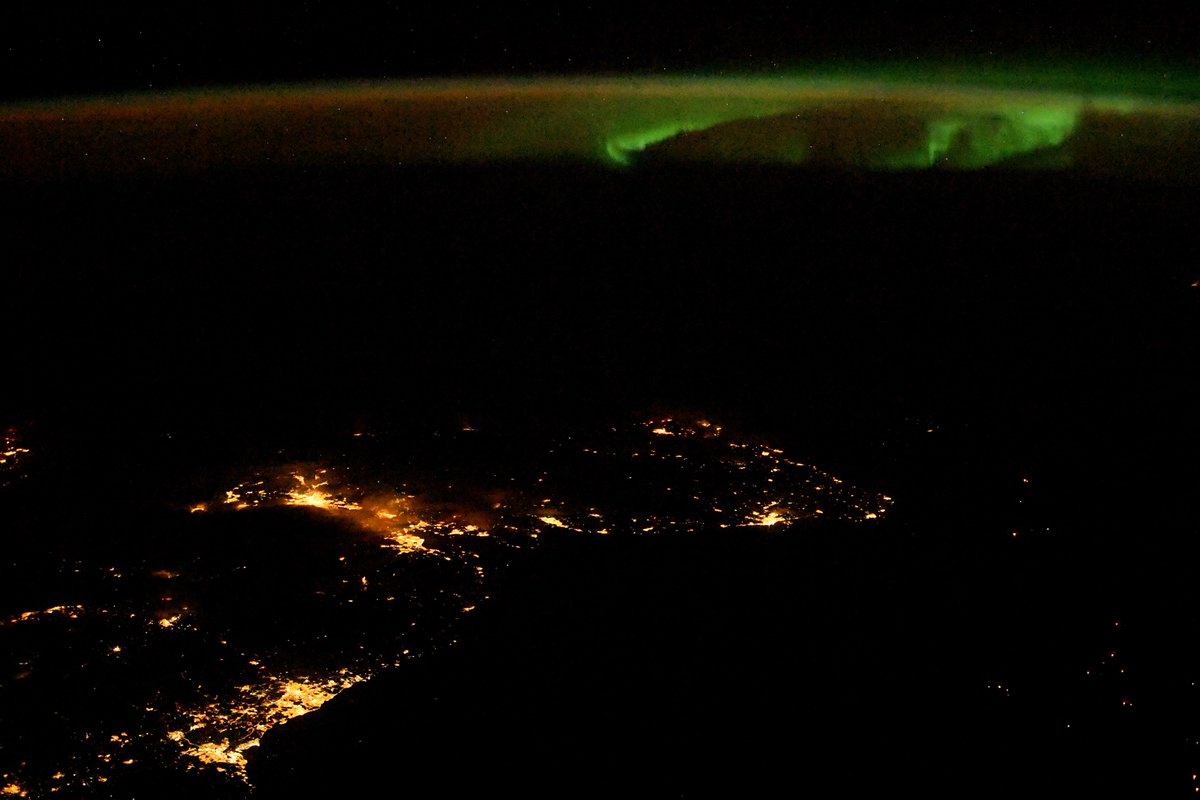[:ja]ランディ・ブレズニク宇宙飛行士がISSから撮影したスコットランドとオーロラです。

オーロラは、太陽からのプラズマ粒子が惑星の磁力線に沿って極地方に向かって加速し、大気中の粒子と衝突して光っている現象です。このため、オーロラは北緯65~80度の北欧のような高緯度地域でしか見るのが難しいのですが、時々北緯57度のスコットランドでも見られることがあります。
地上の様子はこちらです。
参考文献: Randy Bresnik’s Tweet
ウェブ地球儀で地球俯瞰画像を見る: LiVEARTH
[Earthview Wonders] No.475: Scotland and Aurora🏴
Astronaut Randy Bresnik captured from ISS beautiful night view of Scotland and incredible aurora.

Auroras are produced when the magnetosphere is sufficiently disturbed by the solar wind (charged particles in the form of electrons and protons) precipitate into the upper atmosphere. The resulting ionization and excitation of atmospheric constituents emits light of varying color and complexity. Thus an aurora is predominantly seen in the high latitude (northern latitude of 65-80 degrees) regions such as Scandinavia but sometimes can be seen from Scotland with that of 57 degrees.
The local scenery on the ground is as follows.
Reference: Randy Bresnik’s Tweet
See earthview photo gallery with web-globe: LiVEARTH[:en][Earthview Wonders] No.475: Scotland and Aurora🏴
Astronaut Randy Bresnik captured from ISS beautiful night view of Scotland and incredible aurora.

Auroras are produced when the magnetosphere is sufficiently disturbed by the solar wind (charged particles in the form of electrons and protons) precipitate into the upper atmosphere. The resulting ionization and excitation of atmospheric constituents emits light of varying color and complexity. Thus an aurora is predominantly seen in the high latitude (northern latitude of 65-80 degrees) regions such as Scandinavia but sometimes can be seen from Scotland with that of 57 degrees.
The local scenery on the ground is as follows.
Reference: Randy Bresnik’s Tweet
See earthview photo gallery with web-globe: LiVEARTH[:]